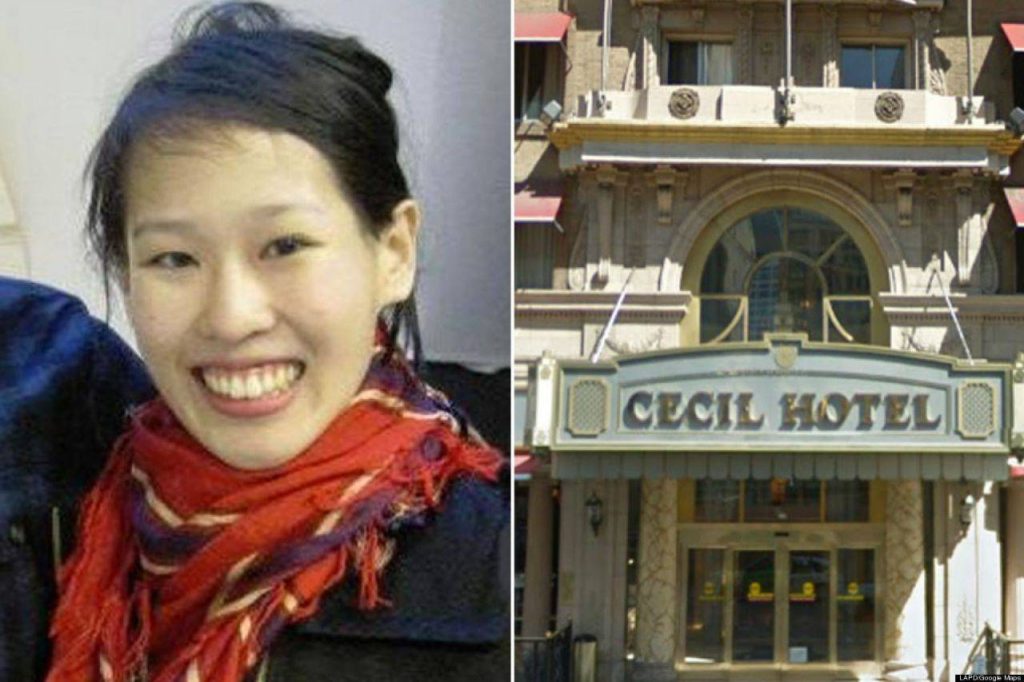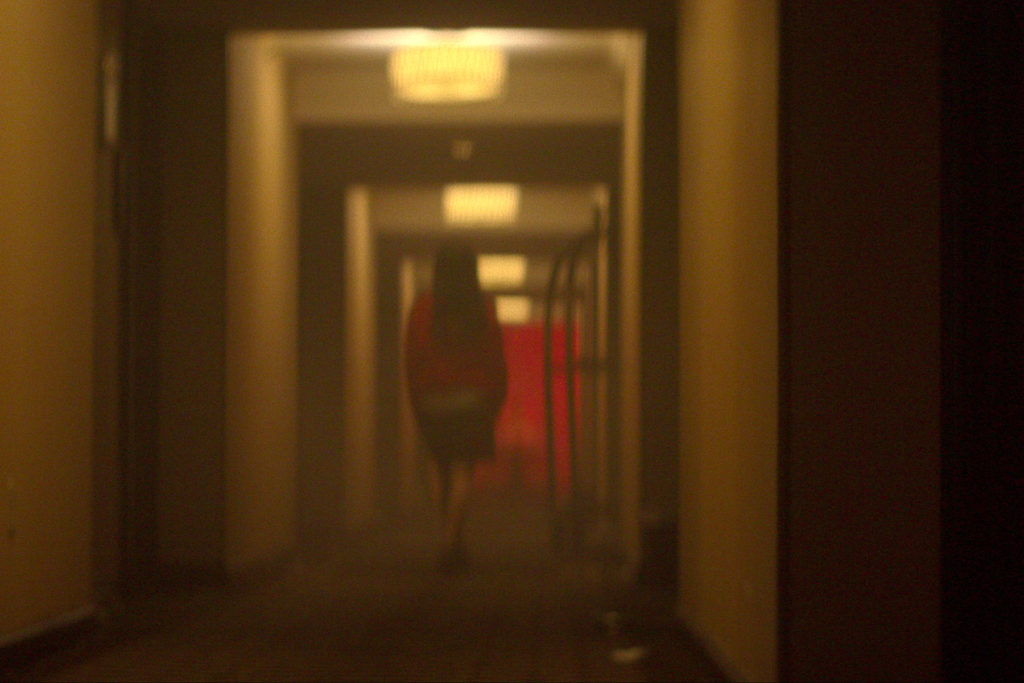It’s not every day that a hotel becomes famous for the mysterious disappearance of one of its guests.

Elisa Lam from Vancouver, British Colombia, booked into the Cecil Hotel on January 28, 2013, and went missing 3 days later.
Born on April 30, 1991, she was diagnosed with bipolar disorder and depression in her teens and was prescribed 4 different types of medications. Whenever she failed to take the bipolar medications, she was known to suffer from hallucinations, and more than once she had been hospitalized by her parents to protect her from herself.
Her trip to California was in part instigated by a relapse and a sensation of feeling lost and directionless in life.
Being something of a blogger, she posted several photos online of the places she visited, as well as photos of the day she checked into the Cecil Hotel on 28 January.
Initially roomed with other patrons, her reportedly odd behavior of leaving “go away” and “go home” notes, got her moved to her own room within 2 days. The date was now 30 January.
Cameras at the hotel were there for security, to protect their guests. They recorded Elisa Lam on the day of February 1st as she entered the lift, pressed a button, waited. The doors didn’t close, the lift didn’t move.

Concerned, seemingly afraid that someone was following her, she took a furtive glance around the corner as if afraid of what, or who, she would find standing there.
Once back inside, she leaned against a side wall, relieved, then slinked into the corner, obviously afraid, her eyes glued on the doors that still refused to close. Building up the nerve, she once again exited the lift, looking both left and right. No one was there. She was alone.
Reentering the lift, she presses all the buttons in an effort to get moving, to get off this floor, but then, bizarrely, she exits the lift again and starts gesturing as if talking to someone, to something, or to herself. This goes on for over 1 minute, and the lift doors remain open, the surveillance camera continuing to bear witness to this strange event.
When the doors finally close it is just for 15 brief seconds, and then, despite all the floor buttons that had been pushed, opens once again to reveal the exact same floor. This time Elisa does not reappear and was never seen alive again.
And then the doors closed for a final time.
Her parents, after not receiving their daughter’s daily call that day, immediately notified the LAPD and flew to Los Angeles to help locate her.
Searches were conducted throughout the hotel and the surrounding areas; video surveillance cameras were scrutinized and even sniffer dogs were brought in to locate Elisa. Not a trace of her was found for over two weeks despite the extensive efforts undertaken by the police, by the public, and by her parents.
During this period the hotel began to receive a series of complaints from guests of low water pressure. On 19 February, Santiago Lopez, a maintenance worker for the hotel, went to investigate the four water tanks on the roof of the building to check for any leaks. Peering through an open hatch of one of them, he found Elisa’s body.
Draining and breaking the tank open, as the fire service couldn’t remove her body through the hatch with the equipment they possessed, she was taken for an autopsy a few days later. It was inconclusive. Although she had been found naked, her clothes floating in the water beside her, there were no marks of a struggle, no signs that she had been molested, no reason why she should be dead.

Failing any evidence to the contrary, the coroner attributed her death to accidental drowning, possibly precipitated by her bipolar disorder. Medically it was a sound assessment, scientifically it was the correct conclusion.
But how had she gotten onto the roof in the first place?
Access to the roof was through a locked door on the stairs leading up, and a locked door at the top, both alarmed, both requiring either a staff key or a staff passcode. Yet even if she had gotten through them without setting off the alarms, how had she gotten into the water tank that was itself nearly 2.5 m high, with no ladder in sight?
It was also disturbing, curious, how the sniffer dogs, after searching the entire area of the roof, had missed her scent.
Further investigations surrounding the death of Elisa Lam created more questions than they gave answers. When her blog on Tumblr was updated long after her death, even more questions arose from the public.
The mysterious circumstances, and the video when it was made public, made many surmise that she had been killed, while others presumed it was suicide based on her history of bipolar disorder.
Another theory of her cause of death some attributed to the history of the hotel that simply could not be explained by normal, logical, or scientific methods.

A brief glance back in time would unearth a sordid history drenched into the floors of the hotel, a bloody history that had seeped into the very walls, screams of anguish that continued to permeate in the very air circulating in every room, on every floor since 1927.
With the Great Depression in 1929, any lofty dreams the hotelier, William Banks Hanner, had for the hotel were forgotten as it became a haven for prostitutes, thieves, the homeless, junkies, and serial killers.
Suicides were a common occurrence throughout the 30s, slit throats, poisonings, jumpers, a bullet to the brain, but it was the two notorious serial killers that stayed there for extended periods that contributed to the hotel’s infamous nickname.
First, Richard Ramirez, known as the infamous Night Stalker and having murdered 13 people, stayed there in the mid-1980s. Incredibly, after murdering his victims, he would saunter through the lobby splattered in blood and not raise an eyebrow from any of the drugged-up inhabitants.
In the 1990s the serial killer, Jack Unterweger, took up residence there while he went on a killing spree of his own, prostitutes his chosen victims, strangling them with their own bras his method of murder.
Interspersed within this time period and beyond, there were a slew of other grisly murders where throats were cut, stabbed bodies were found in rooms, and mutilated corpses were discovered on a regular basis.
The history of the Cecil Hotel, known as the most haunted hotel in Los Angeles, was steeped in a bloody past that had trapped horrific memories within its walls, had smothered screams in the night, and perhaps had harbored something more, something inexplicable that even fresh layers of paint couldn’t coat over…
Were Elisa Lam’s hallucinations due to her disorder? Or was it possible that because of her condition she could see what others couldn’t?
Maybe only Elisa Lam will ever know. But the truth followed her to an unexplainable watery grave on the roof of the most haunted hotel in Los Angeles, the Cecil Hotel.

